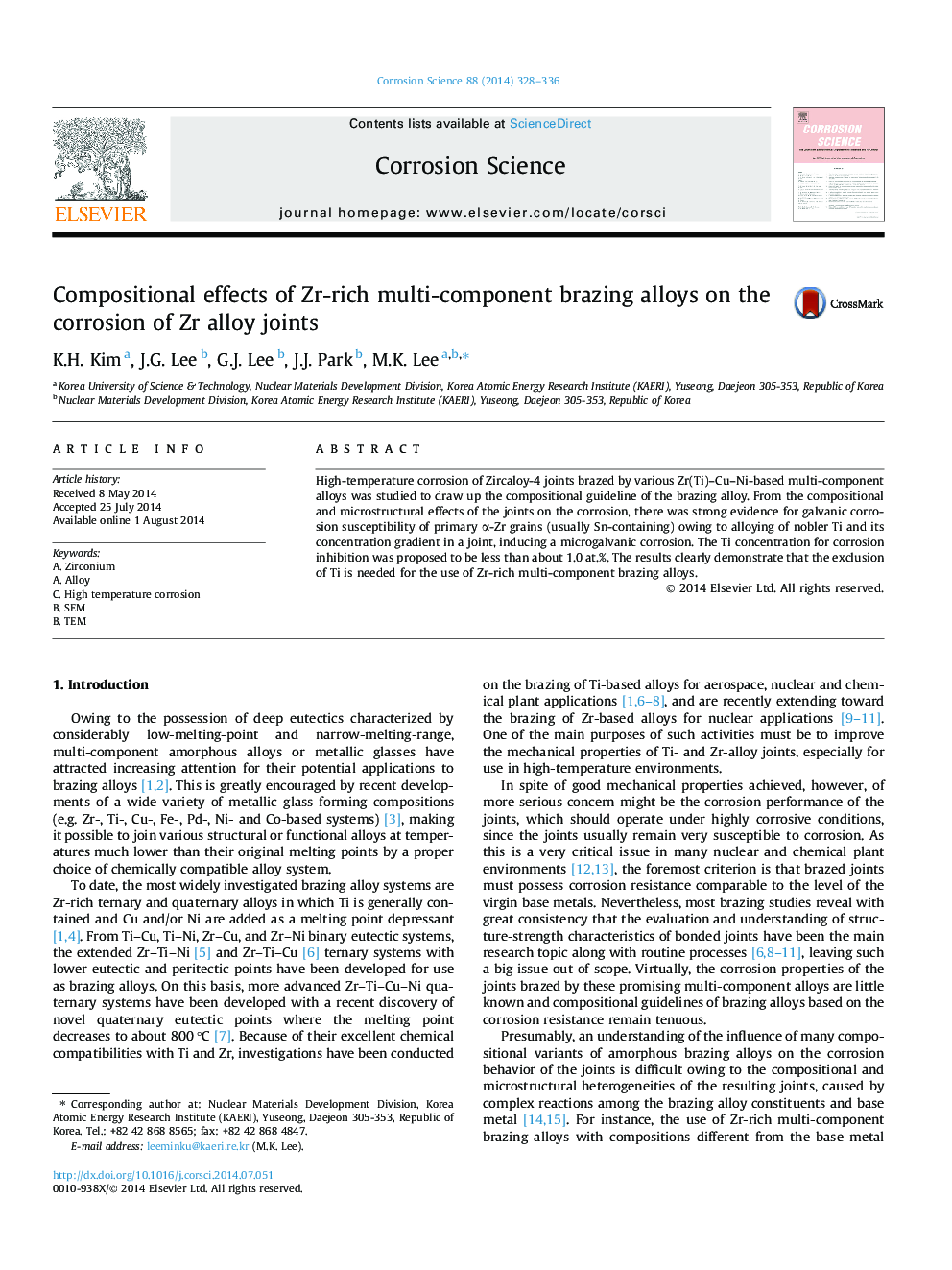| Article ID | Journal | Published Year | Pages | File Type |
|---|---|---|---|---|
| 1468817 | Corrosion Science | 2014 | 9 Pages |
•Corrosion of Zircaloy-4 joints by various Zr(Ti)–Cu–Ni brazing alloys was studied.•Severe material corrosion is common for joints brazed by Ti-bearing brazing alloys.•The origin for galvanic corrosion was not fine IMCs but α-Zr grains alloyed by Ti.•Concentration gradient of Ti in joint is the driving force for galvanic corrosion.•Exclusion of Ti is needed for use of Zr-rich multi-component brazing alloys.
High-temperature corrosion of Zircaloy-4 joints brazed by various Zr(Ti)–Cu–Ni-based multi-component alloys was studied to draw up the compositional guideline of the brazing alloy. From the compositional and microstructural effects of the joints on the corrosion, there was strong evidence for galvanic corrosion susceptibility of primary α-Zr grains (usually Sn-containing) owing to alloying of nobler Ti and its concentration gradient in a joint, inducing a microgalvanic corrosion. The Ti concentration for corrosion inhibition was proposed to be less than about 1.0 at.%. The results clearly demonstrate that the exclusion of Ti is needed for the use of Zr-rich multi-component brazing alloys.
